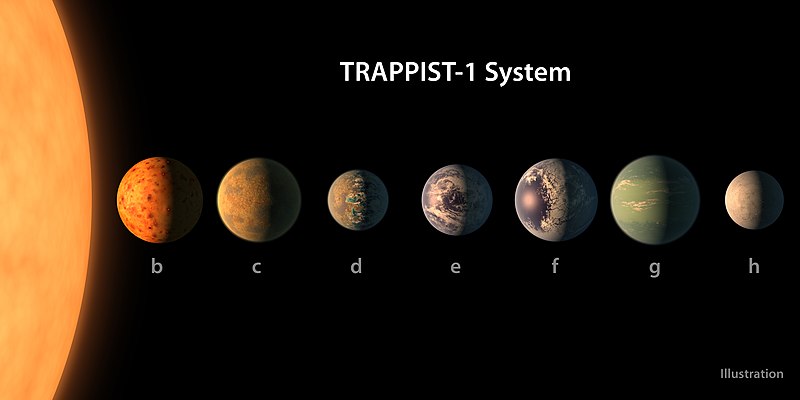Αρχείο:PIA21422 - TRAPPIST-1 Planet Lineup, Figure 1.jpg

Μέγεθος αυτής της προεπισκόπησης: 800 × 400 εικονοστοιχεία . Άλλες αναλύσεις: 320 × 160 εικονοστοιχεία | 640 × 320 εικονοστοιχεία | 1.024 × 512 εικονοστοιχεία | 1.280 × 640 εικονοστοιχεία | 2.560 × 1.280 εικονοστοιχεία | 6.000 × 3.000 εικονοστοιχεία.
Εικόνα σε υψηλότερη ανάλυση (6.000 × 3.000 εικονοστοιχεία, μέγεθος αρχείου: 2,63 MB, τύπος MIME: image/jpeg)
Ιστορικό αρχείου
Κλικάρετε σε μια ημερομηνία/ώρα για να δείτε το αρχείο όπως εμφανιζόταν εκείνη τη στιγμή.
| Ώρα/Ημερομ. | Μικρογραφία | Διαστάσεις | Χρήστης | Σχόλια | |
|---|---|---|---|---|---|
| τελευταία | 18:39, 22 Φεβρουαρίου 2017 |  | 6.000 × 3.000 (2,63 MB) | PhilipTerryGraham | User created page with UploadWizard |
Συνδέσεις αρχείου
Τα παρακάτω λήμματα συνδέουν σε αυτό το αρχείο:
Καθολική χρήση αρχείου
Τα ακόλουθα άλλα wiki χρησιμοποιούν αυτό το αρχείο:
- Χρήση σε af.wikipedia.org
- Χρήση σε ar.wikipedia.org
- Χρήση σε bn.wikipedia.org
- Χρήση σε ca.wikipedia.org
- Χρήση σε en.wikipedia.org
- Χρήση σε es.wikipedia.org
- Χρήση σε et.wikipedia.org
- Χρήση σε fi.wikipedia.org
- Χρήση σε fi.wikibooks.org
- Χρήση σε glk.wikipedia.org
- Χρήση σε id.wikipedia.org
- Χρήση σε ja.wikipedia.org
- Χρήση σε ku.wikipedia.org
- Χρήση σε lt.wikipedia.org
- Χρήση σε ms.wikipedia.org
- Χρήση σε my.wikipedia.org
- Χρήση σε nl.wikipedia.org
- Χρήση σε pnb.wikipedia.org
- Χρήση σε pt.wikipedia.org
- Χρήση σε ro.wikipedia.org
- Χρήση σε tl.wikipedia.org
- Χρήση σε tr.wikipedia.org
- Χρήση σε uk.wikipedia.org
- Χρήση σε ur.wikipedia.org
- Χρήση σε vi.wikipedia.org




